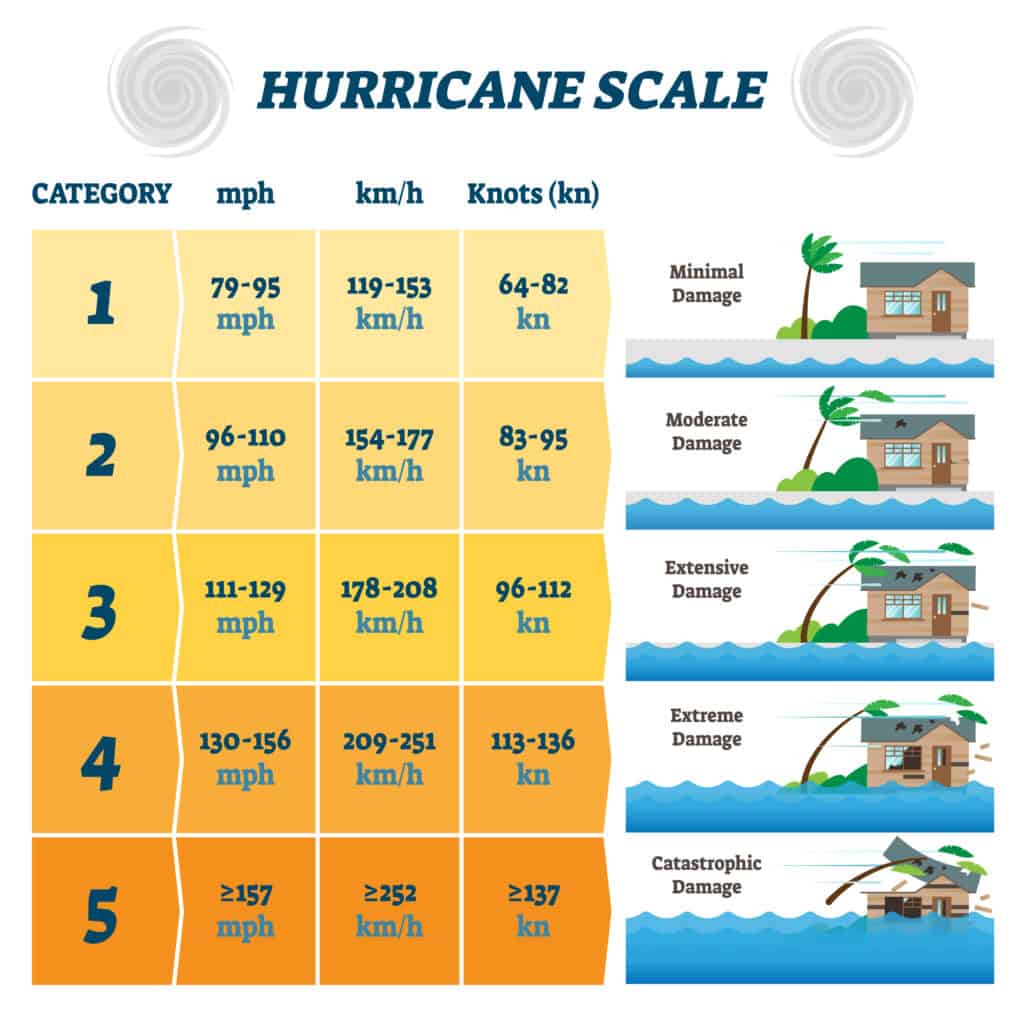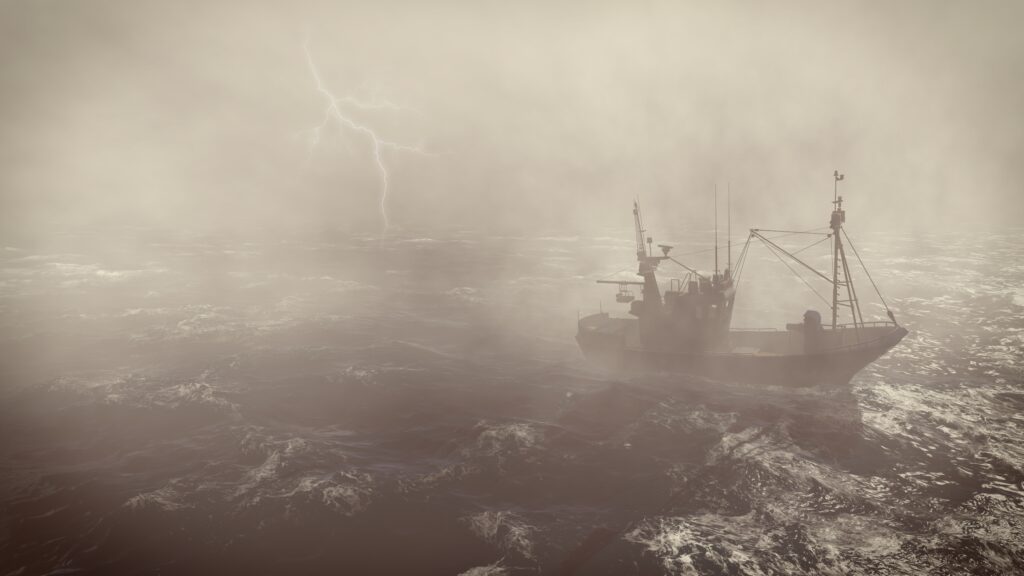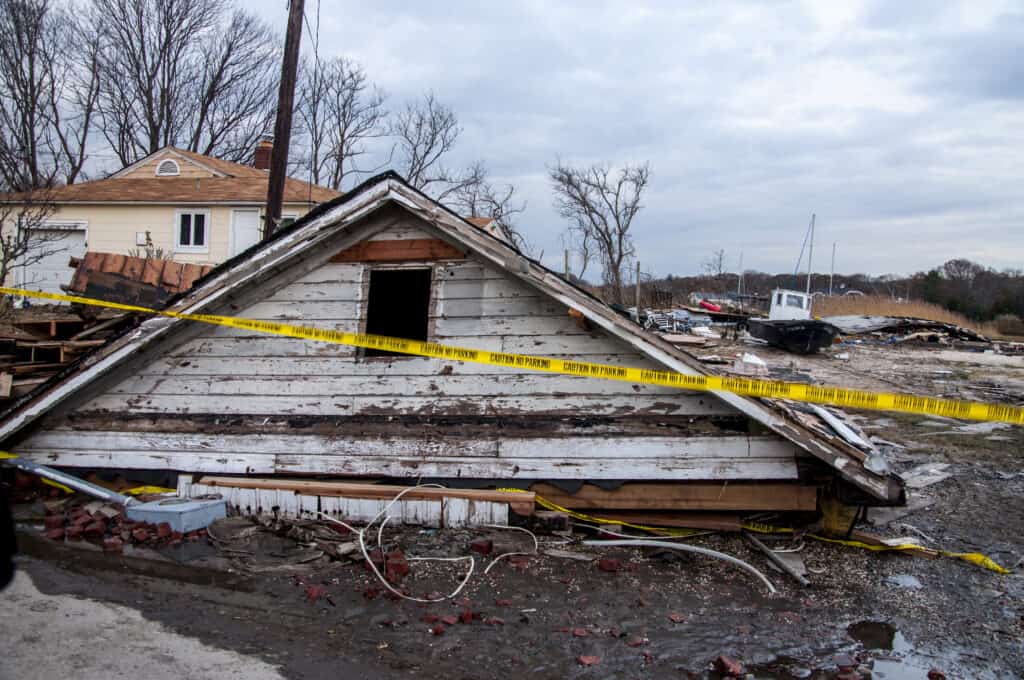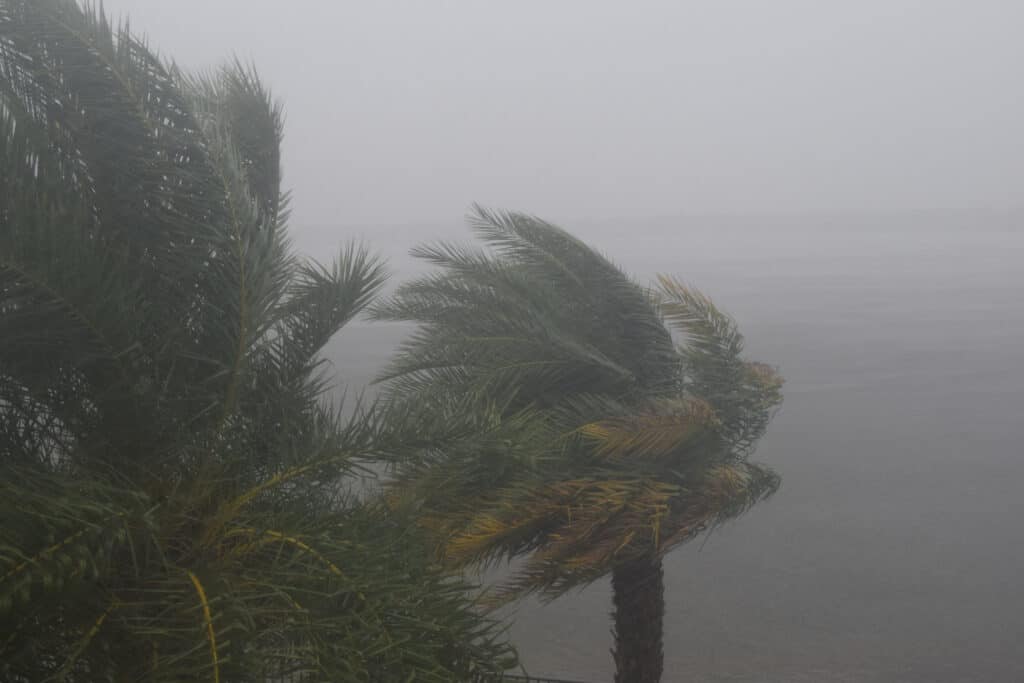With hurricane Ian heading toward Florida, you may need to understand its category. First, you need to know about the scale and how it works. The Saffir-Simpson Hurricane Wind Scale is what the National Hurricane Center to categorize storms.
It assigns a grade of 1 to 5 based solely on a hurricane’s greatest sustained wind speed and ignores other potentially fatal risks like storm surge, flooding, and tornadoes, all of which Ian may experience. Since it is strictly based on wind speed categories, it doesn’t necessarily mean more damage.
The amount of damage from a hurricane depends on where it is located. Some faster hurricanes cause fewer damages than slower ones. This is because of the location. In this article, we’re going over how each category is determined and what can be expected from them. You’ll also see examples of each category to get a better picture. Keep reading to learn more about how hurricanes are categorized.

The Saffir-Simpson Hurricane Wind Scale is what the National Hurricane Center to categorize storms.
©VectorMine/Shutterstock.com
What Is a Category 1 Hurricane?
Winds that are quite harmful will also cause some damage. Homes with sturdy frames may experience damage to the roof, shingles, and gutters. Large tree limbs will break, and trees with shallow roots may fall over. Power outages could last several days and likely occur if power wires and poles sustain significant damage. The max winds are between 74-95 mph.
1991 Perfect Storm: East Coast United States (Category 1)
Significant damage was caused by the Halloween Storm of 1991 throughout the east coast of the United States, particularly in Massachusetts and southern New Jersey. Over $200 million in damage was done across seven states (1991 USD). The storm caused damage to oceanfront houses from North Carolina to Maine over three days by lashing the region with strong waves.
Numerous homes and other structures were damaged by the coastal floods, which also caused airports and roadways to be closed. Additionally, nearly 38,000 individuals lost electricity due to severe winds. Due to the sparse rainfall and the absence of many leaves on the trees, the overall number of people without power was far lower than it was during Hurricane Bob two months earlier.
There were thirteen confirmed fatalities, including six on board the swordfishing boat Andrea Gail. Sebastian Junger’s best-selling nonfiction book The Perfect Storm (1997), which was transformed into a major Hollywood picture in 2000 as The Perfect Storm with the famous George Clooney, made the storm and the boat’s sinking its focal point.

There were thirteen confirmed fatalities, including six on board the
swordfishing
boat Andrea Gail during the Perfect Storm.
©DMG Vision/Shutterstock.com
What Is a Category 2 Hurricane?
Extremely hazardous winds will result in significant damage. Well-built frame homes could suffer significant siding and roof damage. Several trees with shallow roots will uproot or snap, also blocking many routes. Near-total power loss is anticipated, and disruptions could linger for days or perhaps weeks. The max sustained winds are between 96-110 mph.
Hurricane Ike: Texas 2008
In Texas, Hurricane Ike had devastating and protracted impacts. Ike’s effects included fatalities, extensive property destruction, and changes in the cost and supply of oil and gas. Also, the American economy suffered long-term impacts from Hurricane Ike. On September 13, 2008, Hurricane Ike landed over Galveston and inflicted significant damage throughout Texas with sustained winds of 110 mph, a 22-foot storm surge, and massive coastal flooding.
Ike is reported to have caused the deaths of 37 individuals in Texas as of December 27, 2008, while hundreds are still missing. Before dawn, the storm had arrived with winds of 110 mph and huge waves that had driven boats ashore. It destroyed many homes, flooded many others, broke windows in Houston skyscrapers, uprooted trees, and caused millions of people to lose electricity for weeks or months (between 2.8 million to 4.5 million people estimated).
Some people stayed alive by scaling buildings or trees, using boats, or floating until they reached firm ground. After that, other boats washed ashore in Texas, and it was estimated that 100,000 homes had flooded. Due to insufficient electricity, Galveston was deemed uninhabitable, and Houston implemented a midnight curfew for a week.

it was estimated that 100,000 homes had flooded during Hurricane Ike.
©MDay Photography/Shutterstock.com
What Is a Category 3 Hurricane?
The damage will be devastating. Roof decking and gable ends may be severely damaged or removed from well-built framed homes. Numerous highways will be blocked because of multiple snapped or uprooted trees. After the storm, there won’t be any water or electricity for days or even weeks. The max sustained winds are between 111-129 mph.
Hurricane Sandy: New York City 2012 (Category 3)
Hurricane Sandy hit in New York City on October 29, 2012. About 300 homes were destroyed over 48 hours by wind, rain, and water. Additionally, thousands of New Yorkers lost power, critical public and private infrastructure were harmed, and many residents were left vulnerable with little access to food, clean water, healthcare, and other essential services.
In addition to causing an estimated $19 billion in damages and lost economic activity in New York City, the storm also claimed the lives of 44 city residents. Most significantly, thousands of New Yorkers were temporarily displaced, and nearly 69,000 housing units were damaged.
Multiple Federal agencies received emergency cash because of the Disaster Relief Appropriations Act of 2013 to aid recovery. New York City received around $4.2 billion in Community Development Block Grant – Disaster Recovery cash as part of this legislation to address various needs, including rebuilding and repairing homes, helping displaced tenants, aiding businesses, and enhancing coastal defenses.

Hurricane Sandy became the largest Atlantic hurricane on record, with a top speed of up to 115mph.
©Cathy Kovarik/Shutterstock.com
What Is a Category 4 Hurricane
There will be catastrophic destruction. Homes with sturdy frames can suffer severe damage, losing some or all of their outer walls and most of their roof structure. Most trees will be brake or uproot, and electricity poles will fall. Downed trees and utility poles will cut off residential areas. Power outages might linger for weeks or even months. Most of the area won’t be habitable for several weeks or months. The max sustained winds are between 130-156 mph.
Hurricane Omar: Caribbean Sea 2008 (Category 4)
Omar peaked early on October 16, with winds reaching a top speed of 130 mph. In 2009, the harm done to Antigua and Barbuda’s agricultural economy sparked serious worries about “food security.” Damages to Antigua and Barbuda were $54 million, with most of the losses occurring in Antigua, where nine homes were destroyed, numerous others were damaged, and numerous farms were submerged.
Omar impacted many islands in the eastern Caribbean, while the majority only had moderate effects. In Puerto Rico, one person passed away from a heart attack brought on by stress. The US Virgin Islands also suffered severe damage, which cost about $6 million.
Over 100 power poles were snapped, and numerous boats and houses were damaged. Omar’s close approach to Dominica caused 30 families to become homeless and also badly affected the fishing industry. The storm’s total damages were calculated at $79 million.

Over 100 power poles were snapped, and numerous boats and houses were damaged During Hurricane Omar.
©LouiesWorld1/Shutterstock.com
What Is a Category 5 Hurricane?
There will be more catastrophic destruction. Many substantial framed homes will be lost with complete roof failure and wall collapse. Downed trees and utility poles will cut off residential areas. Power outages could linger for several weeks or even months. Most of the area won’t be habitable for several weeks or months. The max sustained winds will be a minimum of 157 mph or higher.
Hurricane Katrina: New Orleans, 2005
Hurricane Katrina, a destructive Category 5 Atlantic hurricane that struck the area in late August 2005 with over 1,800 fatalities and $125 billion in damage, devastated the area, especially New Orleans and the neighboring areas. It presently shares the record of being the most expensive tropical cyclone ever recorded with Hurricane Harvey in 2017.
The storm seriously harmed the economy. The $105 billion in repairs and reconstruction requested by the Bush administration did not consider the potential disruption of the oil supply, damaged Gulf Coast transportation infrastructure, or grain exports. Katrina shut down all Gulf of Mexico oil production by damaging or destroying 30 oil platforms and nine refineries.
Six months after Katrina, it was about 24 percent of yearly production, while shut-in gas production was about 18 percent. On 1.3 million acres, the Mississippi woods were also decimated. Hurricane Katrina caused a $5 billion loss for the forestry industry. Numerous residents were also unemployed. With its 175 mph wind, this hurricane caused a lot of damage.

With its 175 mph wind, Hurricane Katrina caused a lot of damage.
©lavizzara/Shutterstock.com
Conclusion

You can see how severity can drastically change the amount of damage done by a hurricane.
©Michael Grachikov/Shutterstock.com
You can see how location can drastically change the amount of damage done by a hurricane. Sometimes hurricanes can calm before they hit land. It is estimated that Hurricane Ian might reach category 4 hurricane status. Hopefully, everyone has evacuated safely from this monster of a hurricane.
What can you do to help? You can read or watch updates on The Weather Channel. If you want to start also start helping the people who will be affected by Hurricane Ian, you can begin making donations to Mercy Cheifs. This will also ensure everyone at least gets fed. Share this post to help others understand the different categories of hurricanes and learn more about hurricanes from the articles below.
Up Next:
- Which Countries Have The Most Hurricanes?
- What Causes Hurricanes? How are They Formed?
- How Destructive Was The Biggest Hurricane Ever?
The photo featured at the top of this post is © FotoKina/Shutterstock.com
Sources
- NBC New York, Available here: https://www.nbcnewyork.com/weather/weather-stories/hurricane-categories-breaking-down-the-very-dangerous-to-the-catastrophic/3882035/
- Wikipedia, Available here: https://en.wikipedia.org/wiki/List_of_United_States_hurricanes
- For The People, Available here: https://www.forthepeople.com/insurance-attorney/worst-hurricanes-in-us-history/
- NY Post / Zachary Folk, Available here: https://nypost.com/2022/06/07/worst-hurricanes-in-us-history/
FAQs (Frequently Asked Questions)
What scale is used to measure hurricanes?
The Saffir-Simpson Hurricane Wind Scale is what the National Hurricane Center to categorize storms.
How many categories are there on the Hurricane Scale?
It assigns a grade of 1 to 5 based solely on a hurricane’s greatest sustained wind speed and ignores other potentially fatal risks like storm surge, flooding, and tornadoes. Since it is strictly based on wind speed categories, it doesn’t necessarily mean more damage.
Thank you for reading! Have some feedback for us? Contact the AZ Animals editorial team.






